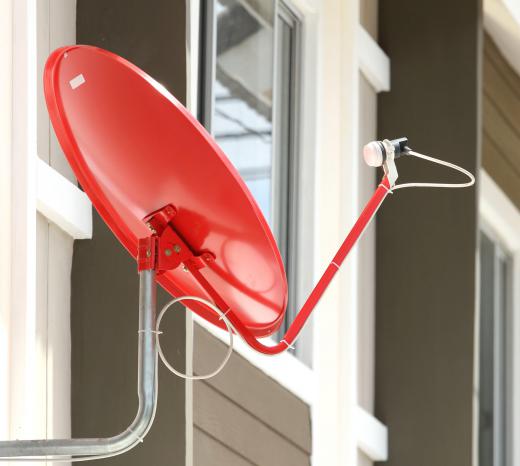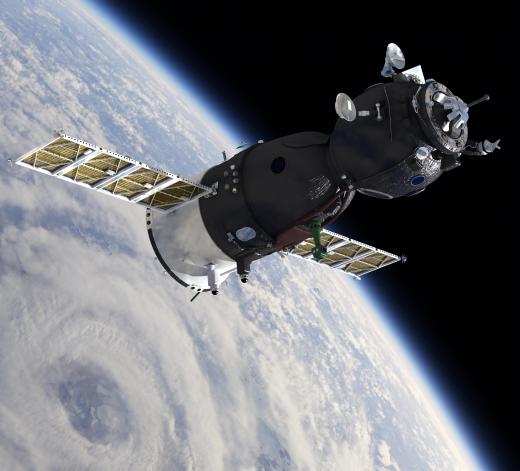What is Geostationary Orbit?
A geostationary orbit is one in which the speed at which a satellite orbits the Earth coincides with the speed that the Earth turns and at the same latitude, specifically zero, the latitude of the equator. This does not mean that the satellite and the Earth are traveling at the same speed, but rather that the satellite is traveling fast enough so that its orbit matches the Earth's rotation. A satellite orbiting in this way, therefore, appears to be hovering in the same spot in the sky and is directly over the same patch of ground at all times.
A geosynchronous orbit is one in which the satellite is synchronized with the Earth's rotation, but the orbit is tilted with respect to the plane of the equator. A satellite in this orbit will wander up and down in latitude, although it will stay over the same line of longitude. Although the terms "geostationary" and "geosynchronous" are sometimes used interchangeably, they are not the same technically; geostationary orbit is a subset of all possible geosynchronous orbits.

The person most widely credited with developing the concept is noted science fiction author Arthur C. Clarke. Others had earlier pointed out that bodies traveling a certain distance above the Earth on the equatorial plane would remain motionless with respect to the Earth's surface. Clarke, however, published an article in 1945's Wireless World that made the leap from the Germans' rocket research to suggest permanent man-made satellites that could serve as communication relays.

Geostationary objects in orbit must be at a certain distance above the Earth to remain in the same position relative to the Earth's surface; any closer or further away, and the object will not remain in the same position. This distance is 22,236 miles (35,786 kilometers) from the surface.
The first geosynchronous satellite was orbited in 1963, and the first geostationary one the following year. Since the only geostationary orbit for the Earth is in a plane with the equator at 22,236 miles (35,786 kilometers), there is only one circle around the world where these conditions occur. This means that geostationary "real estate" is limited. While satellites are in no danger of bumping in to one another yet, they must be spaced around the circle so that their frequencies do not interfere with the functioning of their nearest neighbors.
AS FEATURED ON:
AS FEATURED ON:














Discussion Comments
In relation to post 2: The moon has not yet escaped the Earth's gravity because it is significantly larger than a geostationary satellite. It has its own force of gravity acting upon the Earth, which helps to keep its orbit in check.
Also, because the moon is larger, the Earth's gravity has a larger area to affect and so has more of an effect on the moon. You seem to be assuming that because the moon hasn't yet escaped the Earth's gravity, then satellites could orbit higher up.
In geostationary orbit the time period of satellite rotation is equal to the time period of earth rotation.
if you see from earth surface to geostationary objects, they will appear motionless in sky. Naveen K.
I know superconductors are said to have zero resistance and some trains operate on the principle of magnetic levitation and superconductors are used in those cases but i don't really know much about what you are discussing on. so you might find this fact useful.
The gravity well surrounding the Earth has nothing to do with the Earth's day. You assume that the stability of an orbit is somehow connected to the length of the day. It is only a case where the orbital period happens to coincide with the Earth's rotation.
At geostationary distances, the orbit will decay over tens of thousands of years but become more eccentric by the moon's gravity. The effect will be more noticeable in higher orbits, with the extreme case that the moon could make a satellite so unstable that it either ends up crashing into the moon or into Earth. The satellite doesn't have enough energy to leave the E-M system.
The moon's orbit is about 10x further away than a geostationary satellite, but still has not escaped the Earth's gravity.
What is the principle of superconducting train?
is it running successfully anywhere now. If not what is the current situation regarding superconducting train?
Post your comments